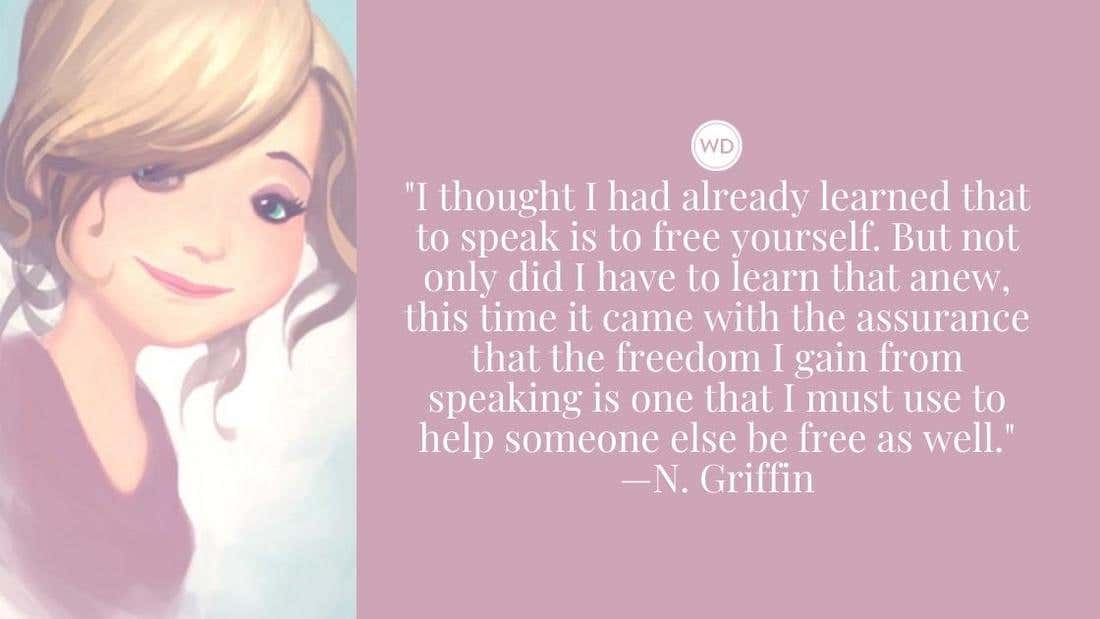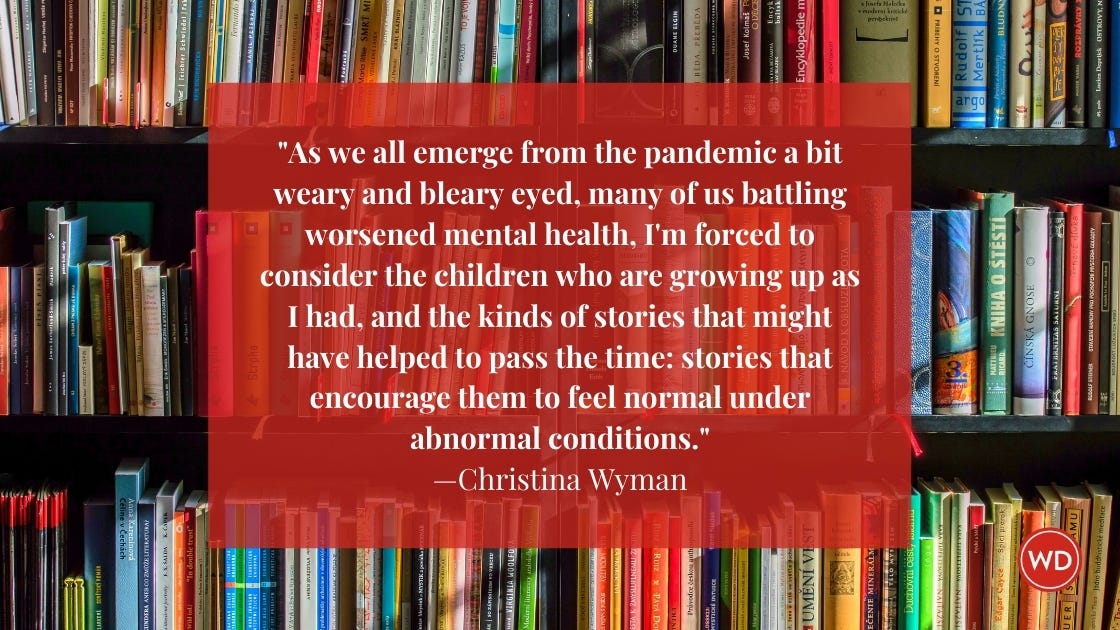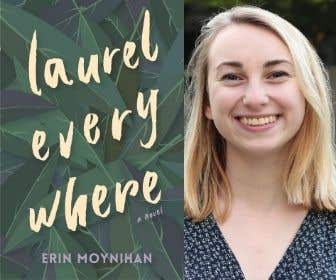Lauren Baratz-Logsted and The Sisters Eight series
Prolific author Lauren Baratz-Logsted enlisted a little help from those closest to home—her family—for her new children’s series The Sisters Eight. by Jordan E. Rosenfeld
In December 2006, snowed in during a Colorado vacation, author Lauren Baratz-Logsted gave birth to a surprise set of octuplets with the help of her husband and 7-year-old daughter.
But these weren’t flesh and blood babies, rather fictional sisters, the 8-year-old stars of a new series that began as a fun way to pass the time and ended with a Houghton Mifflin publishing contract for The Sisters Eight, due out in December.
“I’d reached my limit of entertainment as a mom,” Baratz-Logsted says of her time at the snowed-in airport. “So I asked my daughter, ‘if I were going to write a book for you, what would you like it to be about?’”
Her daughter Jackie wanted a sister story about girls ranging in age from 1–8, but Baratz-Logsted, then the author of more than 10 novels, said, “what if we make it that rarest of things: octuplets?”
Jackie agreed, and soon her father, novelist Greg Logsted, was also recruited into the fun. She says her husband is integral to coming up with clever inventions—such as the talking refrigerator¬¬—for the books.
With illustrations by Lisa Weber that will likely to appeal to fans of Lemony Snicket, The Sisters Eight kicks off with Annie’s Adventures and Durinda’s Dangers, the first two of nine books. After each sister gets her own book, the authors plan to write a finale that Baratz-Logsted says is somehow going to bring it all together in one great adventure. In the premiere volume, it’s New Year’s Eve 2007, and the eight sisters are at home with their parents, who soon disappear. “These little girls are challenged to figure out the mystery of what happened to them, while keeping the rest of the world from realizing that they’re living home alone,” says Baratz-Logsted. Along the way, each girl will realize a supernatural power and be given a specific physical.
While the first book was written on a lark, Baratz-Logsted decided when it was complete that there really was nothing like it on the market and sent it off to her agent, who quickly sold the series.
The Sisters Eight is quite possibly the first series for children written by an entire family. While Baratz-Logsted performs the actual writing, each chapter is thoroughly discussed. “Jackie named all the characters,” Baratz-Logsted says, chuckling when she points out that one of the sisters is also named Jackie. While her daughter picks the powers and gifts for the stories, all three family members conspire about the plot. Baratz-Logsted typically tries to do her writing when Jackie is on school vacation and they can have editorial lunches to decide what needs to happen next.
“Some families spend their time talking about their favorite television shows. We enjoy talking about The Sisters Eight,” Greg says. “The easiest part is coming up with great new ideas. The hardest part is picking which ideas to use.”
For 8-year-old Jackie, who has always admired her mother’s profession as a writer, the entire process has been thrilling. Her most exciting moment so far came when she and her mother read from the series in Jackie’s classroom, and her class members asked for her autograph.
Breaking into the game
Baratz-Logsted takes none of her success for granted; she works hard for it, maybe harder than most, a feat she was prepared for when she left an 11-year job as a bookseller. While she had a decent salary and health benefits, she was working 55 hours a week and had no time to write. When she quit, she admits, there were grumbles of uncertainty in her family.
Baratz-Logsted, however, had little time for doubters. “By the time I quit the bookstore, I had wanted to write for 20 years.”
In order to finance her writing career, she juggled part-time jobs. At one point she had as many as four—including washing windows—just to pay the mortgage. Baratz-Logsted’s website describes her as “the only woman in the world who has ever both hosted a book signing party and washed the windows of the late best-selling novelist Robert Ludlum.”
Eight years and seven unpublished novels after quitting her full-time job, she finally sold a novel, The Thin Pink Line, about a London editor who fakes a pregnancy to get attention. “Any debut novelist probably has a few novels at home that didn’t sell,” she says. “One of the biggest mistakes people make is that they give up too early. I didn’t give up—and I had a lot of people say no to me.”
An independent streak
Baratz-Logsted tried to break into publishing by following the rules and getting a literary agent the old-fashioned way, through a query letter. By the time she snagged her first agent, she was hungry to publish. The agent asked for multiple rewrites of the book he was representing, Vertigo. “I started jumping through hoops like crazy,” she says. “It was getting better, but I was fatigued.” Around this time, she became aware of the new Harlequin publishing imprint Red Dress Ink, and thought they might be interested in her sixth novel, The Thin Pink Line. She asked her agent if he’d consider sending it to them. “He said that there were too many books out there like it, but I knew there weren’t,” she says.
The agent refused to send the book, Baratz-Logsted says, and he scathed her when she asked if she could submit it herself. She sent the book to the publisher anyway and eventually sold it to Red Dress Ink as part of a two-book deal that multiplied into an additional three-book deal. The Thin Pink Line got a starred Kirkus review, the first time a Harlequin imprint entrant had ever received one.
She also ended her relationship with the agent. “Just to keep me happy, all this agent had to do was represent me to one publisher. He lost the sale and the client,” she says.
Though she now has a great working relationship with her agent, Pamela Harty, of the Knight Agency, she believes writers must take their careers into their own hands at times.
Genre bender
Many writers are encouraged by the marketplace or publishing professionals to find a genre or niche and stick to it. It’s no surprise that Baratz-Logsted, who has forged her own unique path from the beginning, hasn’t followed that rule. Her seven published adult novels include chick-lit, urban comedy and a Victorian suspense; her three novels for teens handle such weighty topics as teen pregnancy, the loss of a parent and a young girl’s early development; and then, of course, there are the first two Sisters Eight books. When asked if she purposely tries to avoid being pigeonholed in one genre, Baratz-Logsted demurs.
“A lot of writers pick a genre and stay in that one for the life of their careers, but I get an idea and the idea dictates the format it will be in,” she says.
When The Thin Pink Line was sold in 1999, the term “chick-lit” hadn’t been coined and she felt her book didn’t fit into an existing category. “I write social commentaries that raise questions I want to address. A comedic format is a fun and challenging medium in which to present these questions,” she says. Vertigo, she says, had to be a Victorian novel because it’s about a wife trapped by her circumstances, who falls in love with a prisoner she’s writing to. “In contemporary society, people would say, ‘why doesn’t she just leave and get a job.’ But that option wasn’t available to her.”
Despite her fluidity in genres, Baratz-Logsted admits she was most surprised when she wrote her first teen novel, Angel’s Choice. “I hadn’t specifically thought about writing for teenagers,” she says. “When I sat down to write about a teen girl who has every advantage and is about to go to Yale, but then winds up pregnant, I didn’t automatically think it was a teen novel.”
Once she accepted her audience, however, Baratz-Logsted was surprised to find that writing for teens thrilled her. “Writing for the teen audience is more challenging since there are so many technological wonders competing for their attention. There’s the feeling that the audience is still discovering the world themselves and are excited about new ideas.”
Baratz-Logsted says the fan mail she’s received for her teen novels differs from the kind she receives for her other books. One teen girl who read Angel’s Choice wrote, “I’m never going to let anyone else make my important decisions for me.”
Says Baratz-Logsted, “I’m never going to win the Nobel Prize or the Pulitzer, but a letter like that is the biggest reward you can get.”
A proliferation of pages
Baratz-Logsted has written 12 books in a remarkable decade. She’s often writing more than one book at a time, and works seven days a week, unless she’s promoting a book. “I couldn’t write several chick-lit or Victorian novels a year, but if I’m writing a comedy and a drama and a [young adult] book, I’m constantly working in fresh voices with different themes, and that keeps it exciting.”
She takes after writers like Stephen King and Nora Roberts who treat writing like a 40-hour per week job. She was back to work reviewing books the day after she gave birth to her daughter in 2000, and she hasn’t taken a day off since.
“I don’t have a lot of space in my world for ‘do I feel like writing today?’” she says. “I’ve learned that the only person who can really ever take you out of the game is you.”








